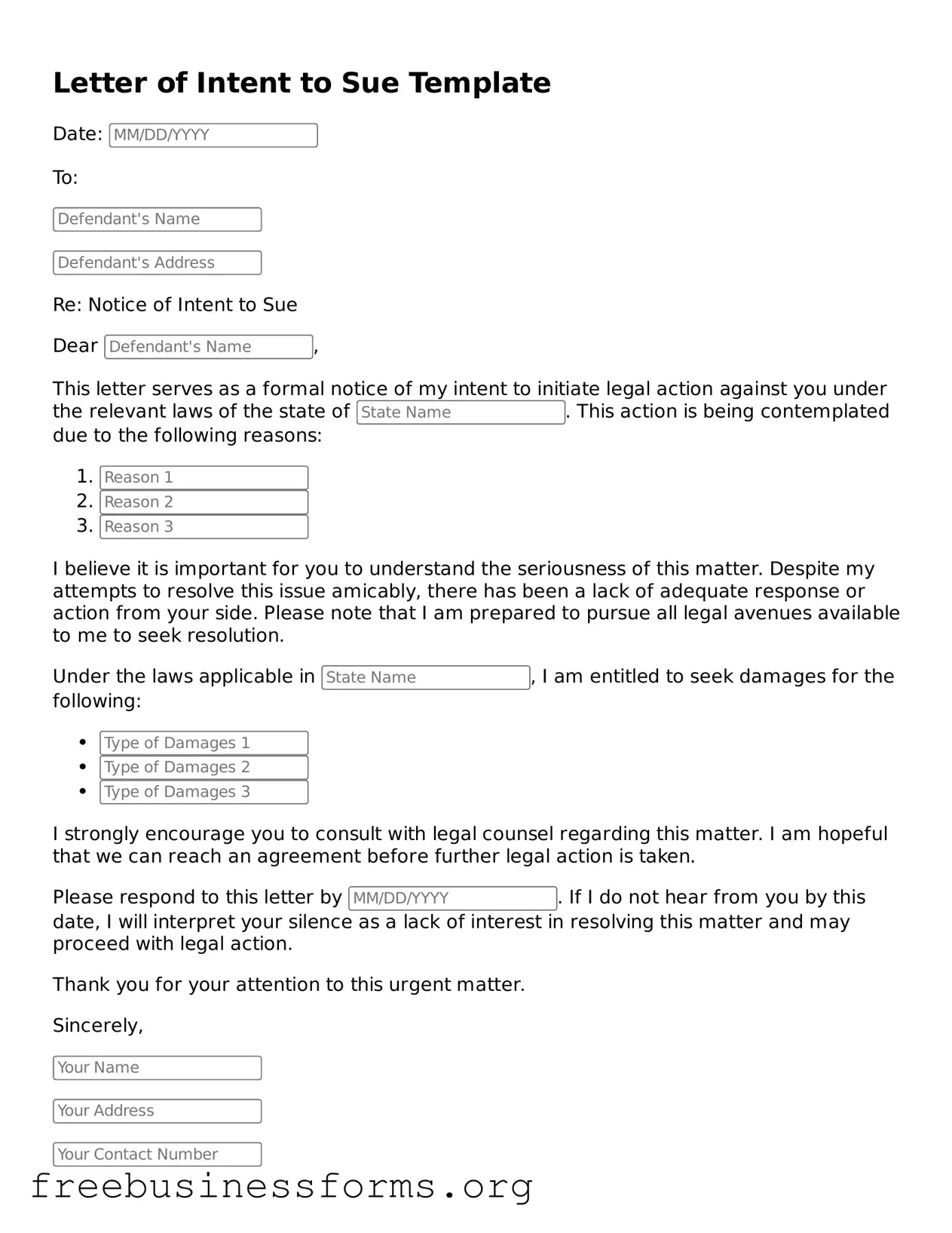Official Letter of Intent to Sue Form
A Letter of Intent to Sue is a formal document that notifies an individual or organization of a potential legal action. This letter outlines the grievances and the intent to pursue a lawsuit if the matter is not resolved amicably. Understanding this form is crucial for anyone considering legal action, as it sets the stage for further proceedings.
Open Form Here
